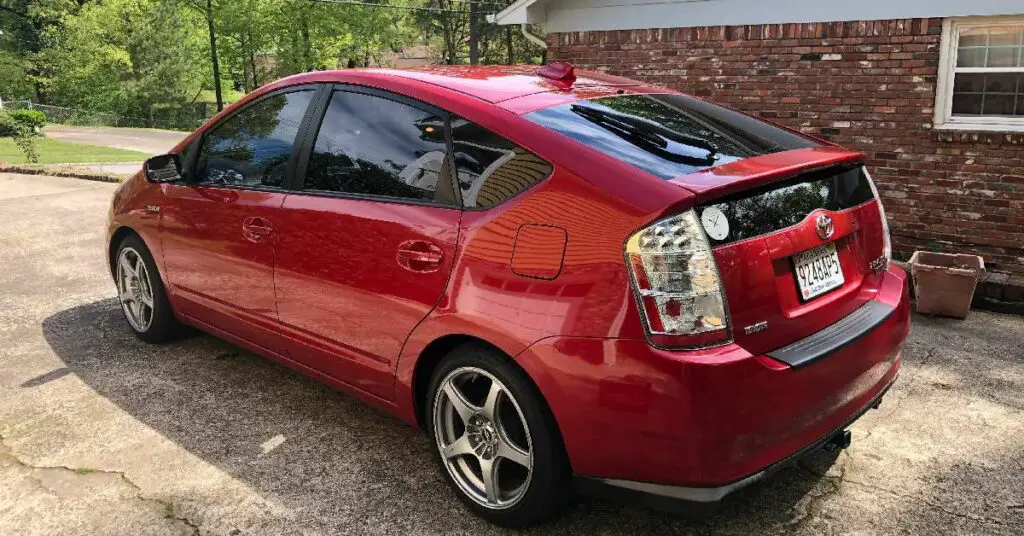
If you’ve been thinking of getting yourself a fuel-efficient, eco-friendly ride, the Prius is probably high on your list. But with so many years and models under its belt, you might be wondering: which Prius years should you avoid? Fear not, fellow car enthusiasts, we’ve got you covered.
In this article, we’ll dive deep into the world of the Toyota Prius, pinpointing the years you should steer clear of and the ones you should be racing to get your hands on. Buckle up, and let’s get started!
The Prius Legacy: A Brief Overview
The Toyota Prius first hit the streets in 1997, but it wasn’t until 2000 that it made its way to the U.S. market. The Prius has seen four generations since then, each with its own distinct characteristics:
- 1st Generation (2000-2003): The humble beginnings of the Prius, featuring a distinctive wedge-shaped design and a gas-electric hybrid system that set the stage for future models.
- 2nd Generation (2004-2009): The Prius became a household name during this time, with a sleeker design, better fuel economy, and improved performance.
- 3rd Generation (2010-2015): This generation introduced a roomier interior, upgraded technology, and even better fuel efficiency.
- 4th Generation (2016-present): The current generation boasts a more aggressive design, advanced safety features, and top-of-the-line fuel economy.
Now that we’ve got our bearings, let’s talk about which years you should avoid and why.
Which Prius Years to Avoid: The Troublemakers
As with any car, there are bound to be a few hiccups along the way. While the Prius generally has a solid reputation for reliability, there are some years where things didn’t quite go as smoothly. Here’s our list of Prius years to avoid:
2010: A Bumpy Start for the 3rd Generation
The 2010 Prius was the first model in the third generation, and it’s notorious for having a host of issues. From excessive oil consumption to problems with the braking system, this model year had its fair share of headaches. Add in some pesky recalls, and you’ve got a recipe for a ride that’s best left on the lot.
2011-2012: The Oil Burners
The 2011 and 2012 Prius models also suffer from excessive oil consumption, which can lead to costly repairs and even engine failure if not addressed promptly. While some owners have had positive experiences with these models, it’s still a risk you may not want to take.
2015: Farewell 3rd Generation, Hello Problems
As the last model of the third generation, the 2015 Prius should have been a grand finale. Instead, it was plagued by issues with the hybrid system’s inverter, which could cause the car to stall or shut down unexpectedly. Definitely not the kind of surprise you want from your trusty ride.
| Generation | Years | Strengths | Weaknesses | Best Model Years |
|---|---|---|---|---|
| 1st Generation | 2000-2003 | Pioneering hybrid technology | Dated design and technology | N/A |
| 2nd Generation | 2004-2009 | Improved fuel economy and performance | None (some issues in 2010) | 2007-2009 |
| 3rd Generation | 2010-2015 | Roomier interior, advanced tech features | Excessive oil consumption, inverter issues | 2013-2014 |
| 4th Generation | 2016-present | Aggressive design, advanced safety features | Make sure to get a well-maintained vehicle | 2016-present |
Which Prius Years to Consider: The Superstars
Now that we’ve covered the troublemakers, let’s move on to the Prius years that are worth your time and money. These models have proven to be reliable, efficient, and just plain enjoyable to drive:
2004-2009: The 2nd Generation Sweet Spot
The second generation of the Prius is considered by many to be the “sweet spot” of the lineup. These models, particularly the 2007-2009 versions, are known for their excellent fuel efficiency, solid reliability, and improved performance. If you’re looking for an affordable, used Prius that’ll give you bang for your buck, this is the place to start.
2013-2014: The 3rd Generation Redemption
After the oil consumption debacle of 2011 and 2012, Toyota got its act together and produced the 2013 and 2014 Prius models. These cars have fewer reported issues and maintain the enhanced fuel efficiency, roomier interior, and advanced tech features that the third generation is known for. If you’re set on a third-generation Prius, these are the years to consider.
2016-Present: The Bold and Beautiful 4th Generation
The fourth-generation Prius is where things get really exciting. With a daring new design, top-notch fuel economy, and a slew of advanced safety features, these models are an excellent choice for anyone looking for a modern, eco-friendly ride. The 2016 and later models are generally reliable, but as with any newer car, it’s essential to do your research and make sure you’re getting a well-maintained vehicle.
The Verdict: Choose Wisely and Drive Happily
In the end, the choice of which Prius to buy comes down to your personal preferences and priorities. Are you on a tight budget and looking for an older model that won’t break the bank? The second-generation Prius might be your perfect match. Do you want a more modern ride with all the bells and whistles? The fourth-generation models are calling your name.
Whichever Prius you choose, remember to do your due diligence, keep an eye out for the troublemaker years, and, most importantly, enjoy the ride. After all, you’re joining the ranks of countless eco-conscious drivers who have made the Toyota Prius a true automotive icon.

As a seasoned mechanic and proud owner of three successful car workshops, I’ve dedicated my life to helping people just like you overcome their everyday automotive challenges. I created this website as a labor of love, with a simple mission: to make car maintenance and repairs more accessible and approachable for the “average joe.”
